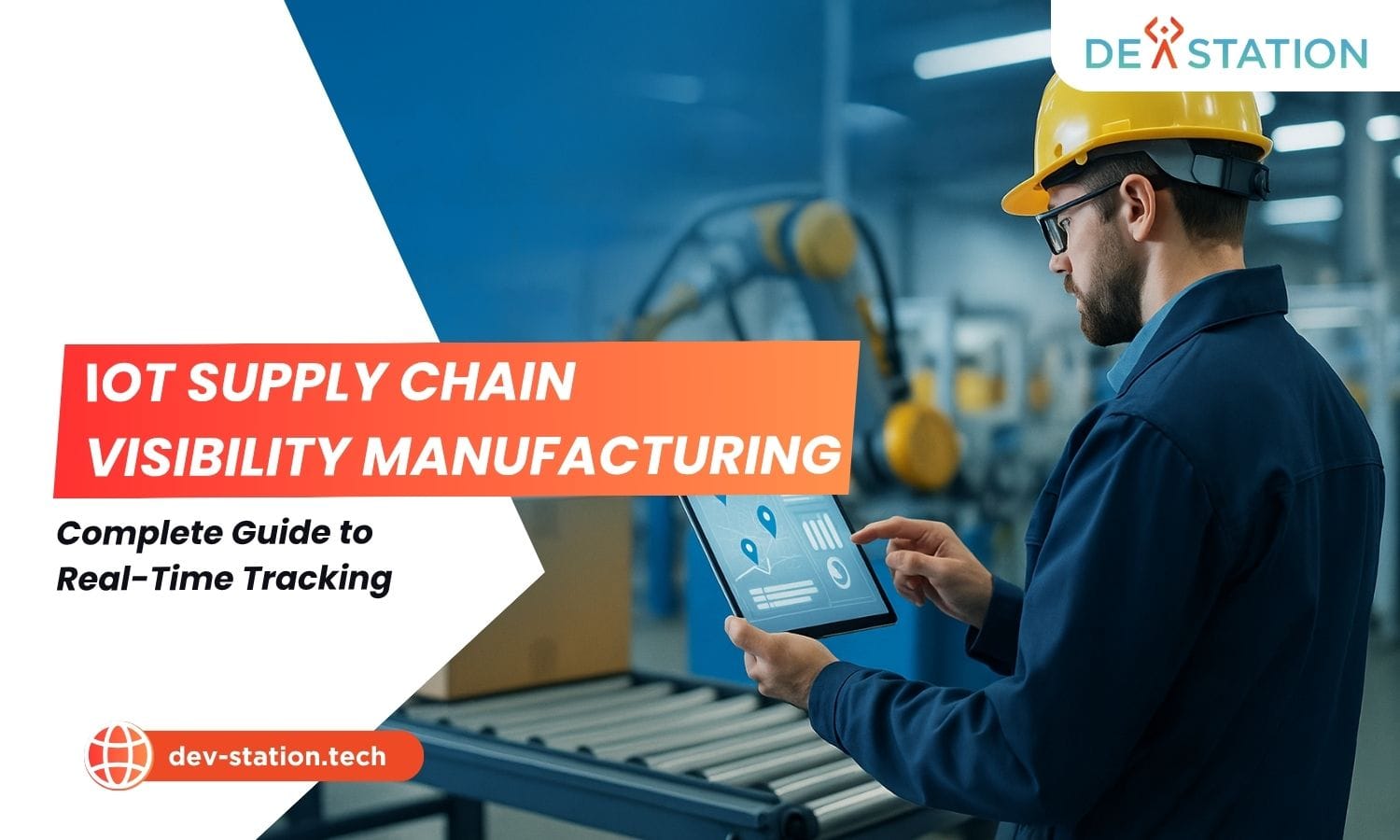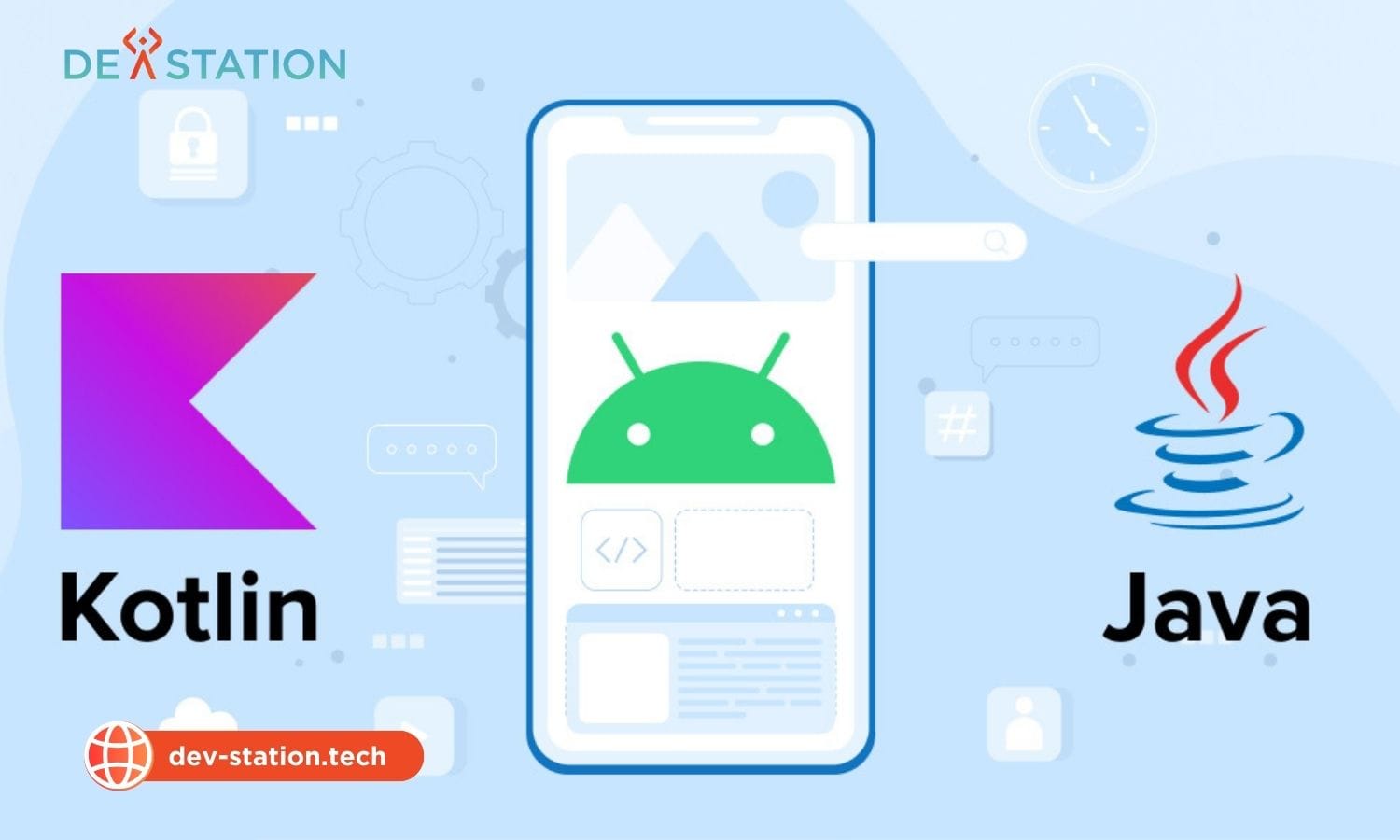IoT supply chain visibility in manufacturing offers a transformative solution to logistical challenges, providing unparalleled end-to-end transparency from raw materials to final delivery. Dev Station Technology helps you harness this enhanced insight to build a more resilient, efficient, and predictive operational framework. Achieve superior inventory management, proactive risk mitigation, and complete logistics optimization.
Contents
ToggleWhy Does Supply Chain Visibility Matter So Much in Manufacturing?
Supply chain visibility is critical because it empowers manufacturers to move from a reactive to a proactive operational model. It directly translates to optimized inventory control, significant risk reduction, and enhanced decision-making, which are the cornerstones of a modern, competitive manufacturing enterprise.
In today’s global market, the manufacturing supply chain is no longer a simple, linear path. It is a complex, sprawling network of suppliers, logistics providers, warehouses, and distributors. Without clear visibility, this complexity becomes a major source of risk and inefficiency. A 2021 survey by Gartner revealed that a majority of supply chain leaders feel their visibility is insufficient to respond effectively to disruptions. This lack of insight leads to several tangible problems:
- Excess Inventory (Bullwhip Effect): Small fluctuations in customer demand can get amplified as they move up the supply chain, causing suppliers to overproduce and hold costly excess inventory. Poor visibility is the primary driver of this phenomenon.
- Unexpected Delays: A minor delay at a single supplier checkpoint can cascade, leading to production shutdowns and missed delivery deadlines. Without visibility, you only learn about the problem when it is too late.
- Quality Control Failures: If a batch of raw materials is compromised, a lack of traceability makes it nearly impossible to quickly identify and recall affected products, leading to reputational damage and regulatory fines.
- Increased Operational Costs: Manual tracking, expedited shipping fees to correct delays, and the cost of holding safety stock all add up, eroding profit margins.
Enhanced supply chain transparency, powered by the iot in manufacturing, directly addresses these issues. It provides a single source of truth, enabling every stakeholder to see the location, status, and condition of goods in real time. This capability is the foundation for building a resilient and agile operation that can adapt to market volatility and unforeseen disruptions, a core competency Dev Station Technology helps its partners build.
What IoT Tracking Technologies Power Modern Supply Chain Tracking?
Modern supply chains rely on a suite of complementary IoT technologies. These include Radio-Frequency Identification (RFID) for automated asset counting, Global Positioning System (GPS) for real-time location tracking, telematics for vehicle diagnostics, and various sensors for monitoring environmental conditions.
No single technology can provide complete visibility. Instead, a successful IoT strategy layers several technologies to create a comprehensive data collection network. At Dev Station Technology, we help clients select and deploy the right mix of hardware for their specific needs. Here are the core components:
How Do RFID and NFC Tags Automate Inventory Tracking?
RFID and NFC tags automate tracking by allowing for the wireless, non-line-of-sight identification of hundreds of items per second. This eliminates manual barcode scanning, drastically reducing labor costs and improving inventory accuracy to over 99%.
Unlike barcodes that require a direct line of sight and must be scanned one by one, RFID (Radio-Frequency Identification) tags can be read in bulk by a reader. Imagine a pallet of goods passing through a warehouse doorway. An RFID reader can instantly identify every single item on that pallet without human intervention. This has profound implications for warehouse automation and logistics monitoring.
- Receiving and Shipping: Automatically verify that incoming and outgoing shipments are correct without manually opening boxes.
- Cycle Counting: Use handheld readers or drones to perform full inventory counts in minutes instead of days.
- Asset Tracking: Attach RFID tags to valuable assets like tools, containers, and equipment to monitor their location within a facility.
What Role Do GPS and Telematics Play in Logistics Monitoring?
GPS provides the real-time location of vehicles and shipments, while telematics expands on this by adding crucial vehicle performance and driver behavior data. Together, they offer complete in-transit visibility, enabling route optimization and proactive maintenance.
Once a shipment leaves the factory, visibility can be lost. GPS trackers, installed on trucks or attached directly to high-value containers, solve this problem. Fleet managers can see the precise location of their entire fleet on a single dashboard. Telematics systems take this a step further by tapping into the vehicle’s onboard diagnostics (OBD-II port) to report on:
- Fuel Consumption and Engine Health.
- Driver Behavior (e.g., harsh braking, speeding).
- Vehicle Fault Codes for predictive maintenance iot.
How Do Environmental Sensors Protect Sensitive Goods?
Environmental sensors monitor and record critical conditions like temperature, humidity, and shock during transit. This continuous data stream ensures the integrity of sensitive products like pharmaceuticals and fresh food, preventing spoilage and ensuring regulatory compliance.
For many manufacturers, the location of a product is only half the story. The condition is just as important. A shipment of vaccines is worthless if its temperature deviates from the required range. IoT sensors can be placed inside shipping containers to create a complete condition log for the entire journey. If a pre-set threshold is breached (e.g., temperature rises above 8°C), an immediate alert is sent to the logistics manager, who can take corrective action. This capability is fundamental to modern cold chain logistics.
How Does IoT Turn Raw Data Into Predictive Insights?
IoT platforms turn raw sensor data into predictive insights by using real-time analytics and machine learning algorithms. This allows them to move beyond simply reporting what happened to predicting what will happen, such as forecasting delivery times and identifying potential disruptions.
Collecting data is only the first step. The true value of industrial iot in manufacturing comes from analyzing that data to make smarter decisions. This is where the cloud platform and analytics software come into play.
What Is Real-Time Analytics in the Supply Chain?
Real-time analytics is the process of instantly analyzing data as it is generated. In the supply chain, this means having a live dashboard that visualizes KPIs like order status, shipment locations, and inventory levels, enabling immediate responses to events.
Instead of waiting for end-of-day reports, managers can use platforms for real-time production monitoring iot that provide a live, dynamic view of the entire supply chain. This includes:
- Live Maps: Visualizing the location of every truck and shipment.
- Status Dashboards: Tracking order fulfillment progress from picking to packing and shipping.
- Automated Alerts: Receiving instant notifications via email or SMS for any deviation from the plan, such as a shipment delay or a temperature anomaly.
Can IoT Forecast Deliveries and Prevent Disruptions?
Yes, by applying machine learning to historical and real-time data, IoT platforms can accurately forecast Estimated Times of Arrival (ETAs). They can also predict potential disruptions by analyzing patterns related to weather, traffic, and past carrier performance, allowing for proactive rerouting.
This is where IoT analytics becomes truly powerful. A platform can analyze GPS data, traffic patterns, and weather forecasts to provide a continuously updated ETA that is far more accurate than a static estimate. For example, if a shipment is headed into a severe weather zone, the system can flag it as high-risk and suggest an alternative route. This predictive capability is also being applied to quality control, where ai vision quality control manufacturing systems can anticipate defects before they occur. The same principles are used for optimizing power usage through iot energy management manufacturing.
How Can You Integrate IoT Data with ERP and SCM Systems?
IoT data is integrated with Enterprise Resource Planning (ERP) and Supply Chain Management (SCM) systems via APIs (Application Programming Interfaces). This allows the real-time operational data from IoT to enrich the business and financial data within the core enterprise systems.
An IoT platform is powerful, but its value multiplies when connected to your core business systems. This integration breaks down data silos and creates a truly unified operational view. A modern supply chain management software solution is designed for this kind of integration.
What Is the Goal of a Unified Logistics Dashboard?
The primary goal is to create a single source of truth. A unified dashboard combines financial data from the ERP, logistics plans from the SCM, and real-time status data from IoT, providing a complete 360-degree view of the supply chain’s health and performance.
Without integration, a manager might have to look at one screen for purchase orders (ERP), another for shipment plans (SCM), and a third for the live location of the truck (IoT). Integration brings all of this information together. A user can click on a purchase order in their ERP and instantly see the real-time location of the truck carrying those specific goods. This context is invaluable for customer service, financial planning, and operational management.
What Do Smart Warehouses and Logistics Look Like in Action?
In action, a smart warehouse uses IoT to automate processes like inventory intake with RFID portals, optimize storage with automated systems, and use data to predict labor needs. Smart logistics involves using telematics and GPS to optimize routes in real time and predict delivery times with high accuracy.
The theory becomes tangible when you look at real-world case studies.
| Company & Industry | IoT Implementation | Reported Outcome |
|---|---|---|
| Amazon (Retail & Logistics) | Extensive use of robotics, sensors, and AI in fulfillment centers to track inventory and automate picking. | Drastic reduction in order processing times and improved inventory accuracy. |
| Maersk (Shipping) | Deployment of IoT trackers on shipping containers to monitor location and temperature in real time. | Reduced spoilage of perishable goods and provided customers with precise shipment visibility. |
These examples illustrate a clear trend: companies that invest in IoT-driven visibility gain a significant competitive advantage. They can run leaner operations, respond faster to customer needs, and mitigate risks more effectively. Advanced concepts like creating a digital twin in manufacturing operations allow for even greater simulation and optimization before changes are made in the real world.
Implementing these technologies requires a partner with deep expertise in both operational technology (the sensors and devices) and information technology (the cloud platforms and software). Dev Station Technology specializes in bridging this gap, delivering end-to-end solutions that provide actionable visibility.
Ready to transform your supply chain and unlock new levels of efficiency and resilience? Learn more about how IoT can revolutionize your manufacturing operations by visiting us at dev-station.tech. Contact the experts at Dev Station Technology today for a consultation. You can reach us via email at sale@dev-station.tech to begin your journey toward a smarter, more visible supply chain.





